This article is part of a new guide to Copenhagen from FT Globetrotter
Borgen is a Danish drama focusing on the life of Birgitte Nyborg (Sidse Babett Knudsen), a politician trying to do it all — power, politics and family. Many of its preoccupations are local to Denmark, and revolve around the difficult and necessary compromises of governing in coalition. Borgen (Danes say it as “born”) first aired in 2010 but became a global hit once it was picked up by the BBC and other international networks. It has been back in the news because Netflix and the Danish broadcaster DR made a fourth (and probably final) series that aired in 2022.

Most of the locations for the series — especially seasons one to three, when the filming budget was much tighter — are within a small area of central Copenhagen, and as a superfan I wanted to see them all. Christine Bordin from the city’s Nordic Noir walking tours agreed to show me round on a tour that other fans can book. It took us about 1.5 hours — with a lot of stops for talking — and the walk is a flat 3km.


Copenhagen is a compact city, and its claustrophobic, gossipy political world is reflected in Borgen (meaning “the castle” — the local term for Christiansborg Palace, the building that is also home to the parliament and the Supreme Court).
Bordin is French but has lived in Copenhagen for 25 years, and has a wry insider/outsider view of Denmark’s society and political system — and the international popularity of the Nordic noir genre that includes Copenhagen-set The Killing and The Bridge. Many of her guests on these tours are British, American and German.

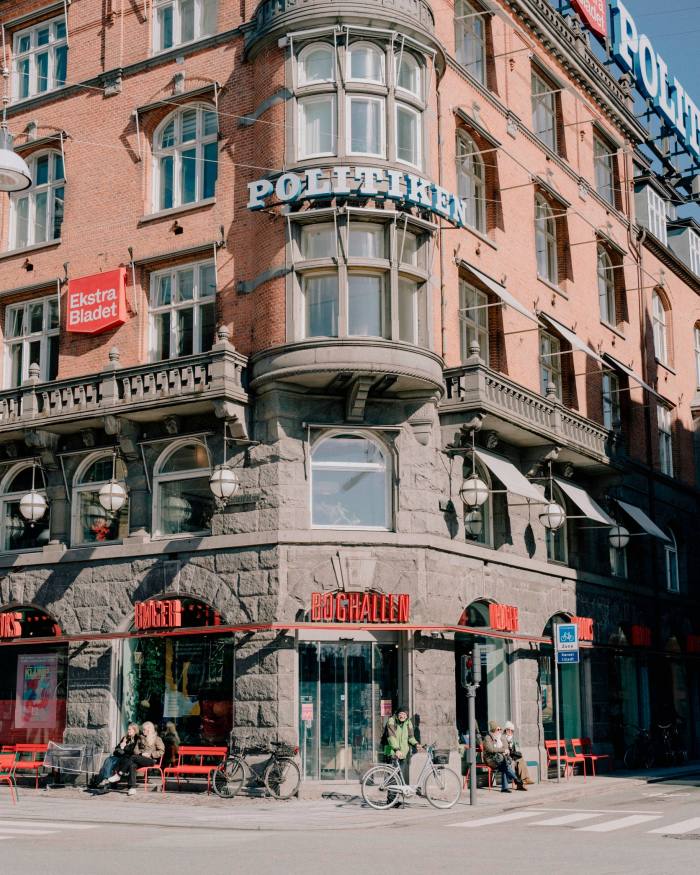
Borgen is an outlier series in terms of the Nordic noir genre. “Borgen is and is not Nordic noir,” Bordin says as we begin our tour on the vast City Hall Square (Rådhuspladsen). It has a thriller-ish feel with all its political intrigue and backstabbing, but nobody is murdered.
Birgitte Nyborg, who unexpectedly becomes prime minister of Denmark at the very start of Borgen, is part of a long tradition of strong female characters in Nordic film and literature, and before that in Old Norse religion and culture.
“Saga Norén [the Swedish detective in The Bridge] is called Saga for a reason — that refers to the sagas,” Bordin says. That should probably have been obvious to me, a woman so enamoured of all things strong and Norse that I named my daughter Freya.

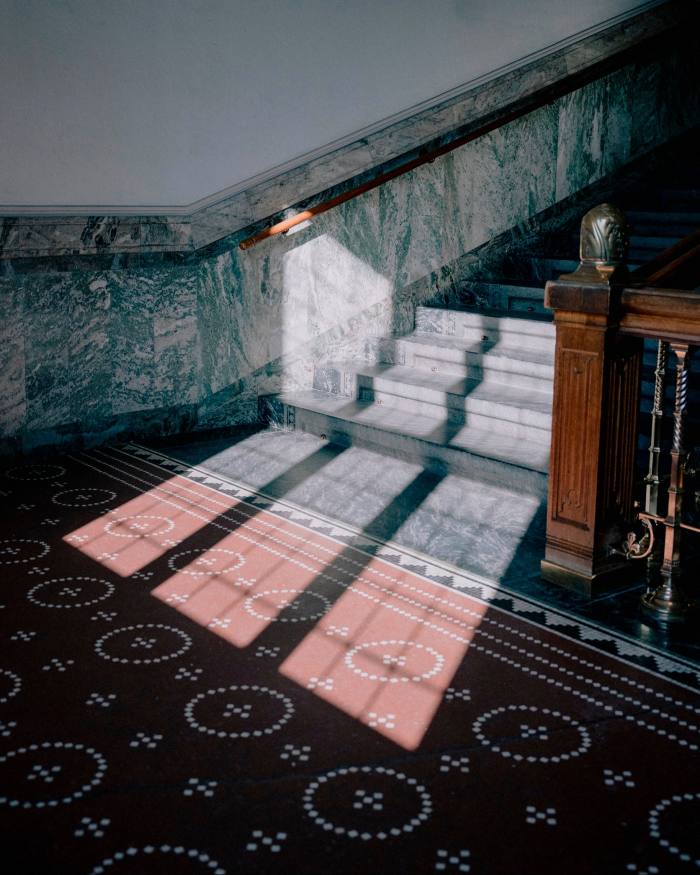
On one side of the square sits the office of Politiken, a serious broadsheet newspaper founded in 1884. A huge sign on the top of the building telegraphs its importance to the politicians inside City Hall, which sits almost opposite. The tense and mutually important relationship between journalists and politicians is one of the themes at the heart of Borgen, and Bordin outlines how the plotlines sometimes reflect real events. In the early 2000s, a disgraced MP went straight into an editor’s job at a tabloid paper in the same publishing group as Politiken — a controversial event that Borgen’s creator, Adam Price, echoed when Birgitte’s scheming (aren’t they all?) political rival Michael Laugesen becomes the editor of a tabloid.
Season four of Borgen focuses on a plotline about an oil discovery in Greenland, with Birgitte forced to make morally compromising decisions — always with the mighty US involved, as well as Russia and China. It offers an education for viewers about Denmark’s ambivalence and Greenlanders’ anger about the colonial past and the power structures that still linger.
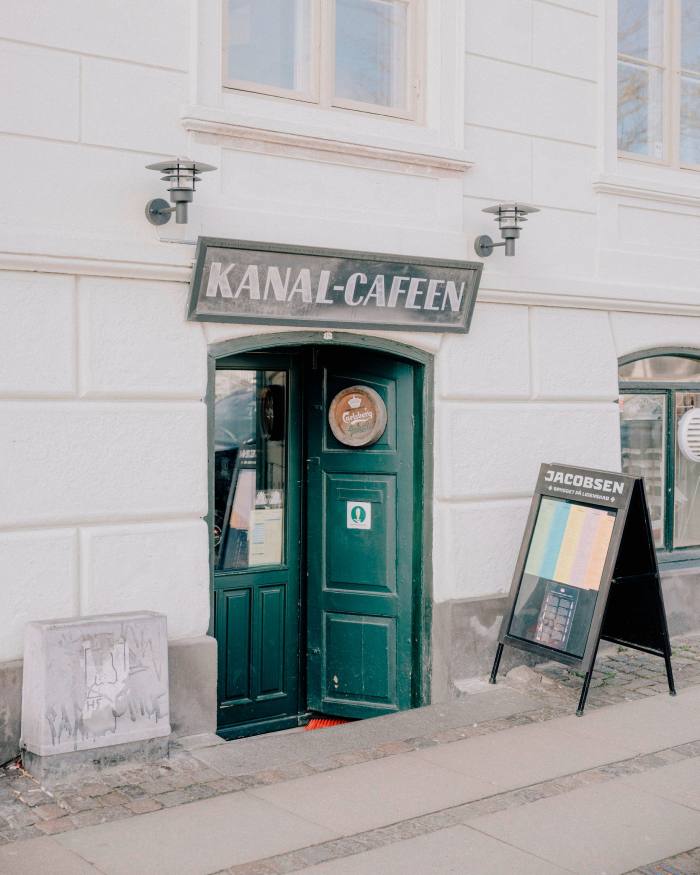

We walk on to the nearby canal, where Kanal-Caféen is one of the oldest and most traditional restaurants in the city. It’s a power-lunch fixture for government officials and MPs and features in Borgen and The Killing. The context — as Danish viewers would know – is that women were not allowed to eat here unless accompanied by a man until the mid 1960s.
Across the canal is an 18th-century entrance to the Christiansborg Palace. We head through this into the grounds of the current Christiansborg Palace (built in the early 20th century – the two previous palaces on the site burned down) and walk through the colonnades that line the square. This is the location for a lot of “walking and talking” meetings take place in the early series of Borgen, although, as Bordin points out, it is echoey, and therefore in reality “would be the last place people would be gossiping”. I decide to power-pose like Birgitte there, nevertheless. Maybe some of her political nous will rub off on me.
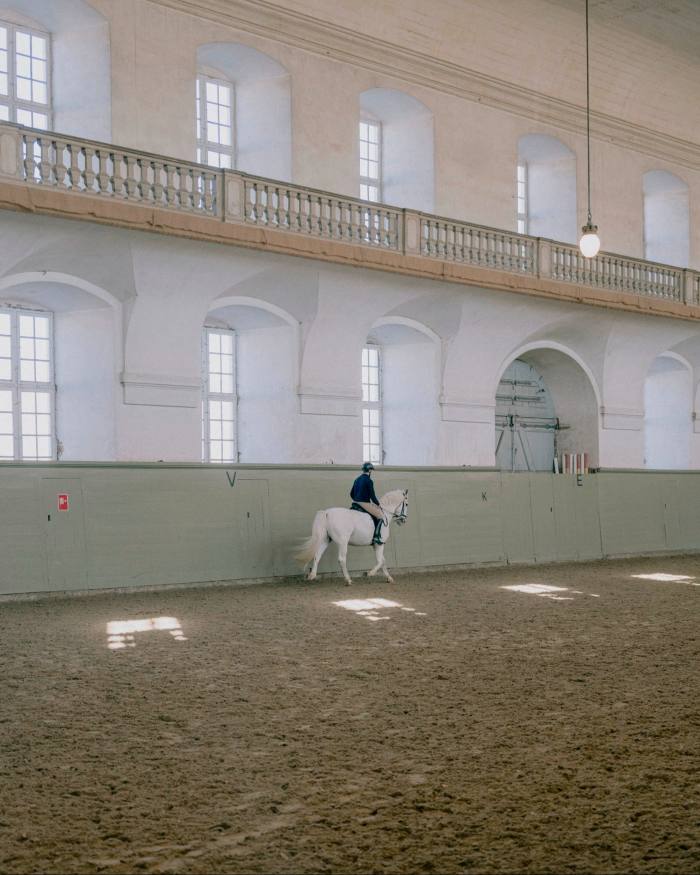
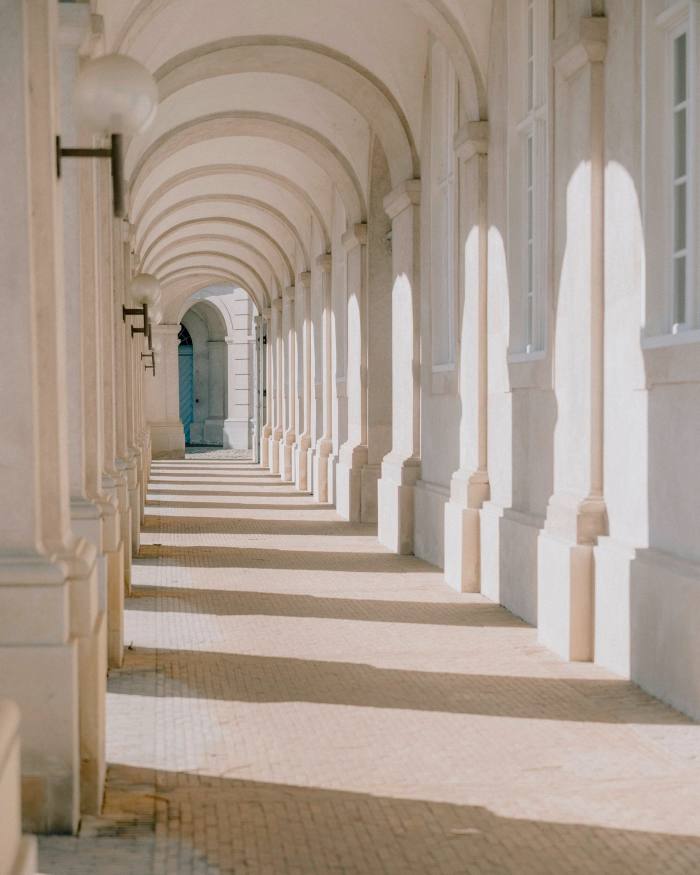

There’s a massive and unsightly horse paddock in front of the palace. The most extraordinary fact I learn from this entire tour is that the current queen of Denmark, Margrethe II, had a historic fountain ripped out (it features in early scenes where Birgitte and her mentor, Bent Sejrø, can be seen talking or eating sandwiches). Bordin drops the bombshell: the fountain was dismantled in 2013 because it was rumoured that the queen, who has a wing of the palace, wanted a place for her horses. A law in Denmark had been passed requiring all horses to have a paddock – but I can’t help wondering if there might have been other spaces available to the Crown. We are discussing politics on this walk, but it turns out the queen of Denmark still wields plenty of power.
All the scenes that were supposedly shot inside the Danish prime minister’s office in the palace were in fact recreated in studios, carefully curated with Danish design pieces — and art from a well-known city gallery owned by the parents of Borgen star Pilou Asbæk, who plays spin-doctor Kaspar Juul.
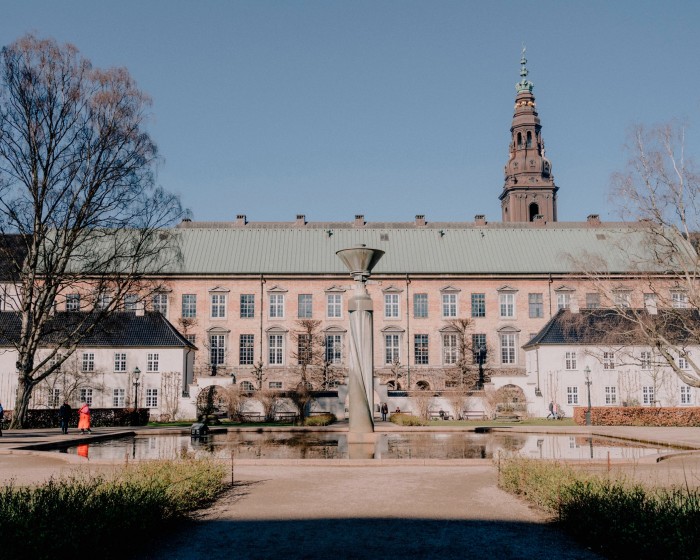
Round the corner, though, is the famous main entrance where newly elected PM Birgitte stands on the steps to give her victory speech in series one. It’s imposing and ceremonial but nearby is the informal Royal Library Garden, also familiar from many scenes in the series.
This peaceful public park — which has been named as one of Copenhagen’s most romantic spots — has (thankfully) managed to keep its lovely fountain. Real MPs often eat their lunch here in good weather, and it was also used for Birgitte’s “walk and talk” scenes. I make a note to rewatch: Bordin says there are far fewer of these in later series, and especially in season four. By this time Birgitte is far more powerful and sure of herself — and the camera focuses on her alone.

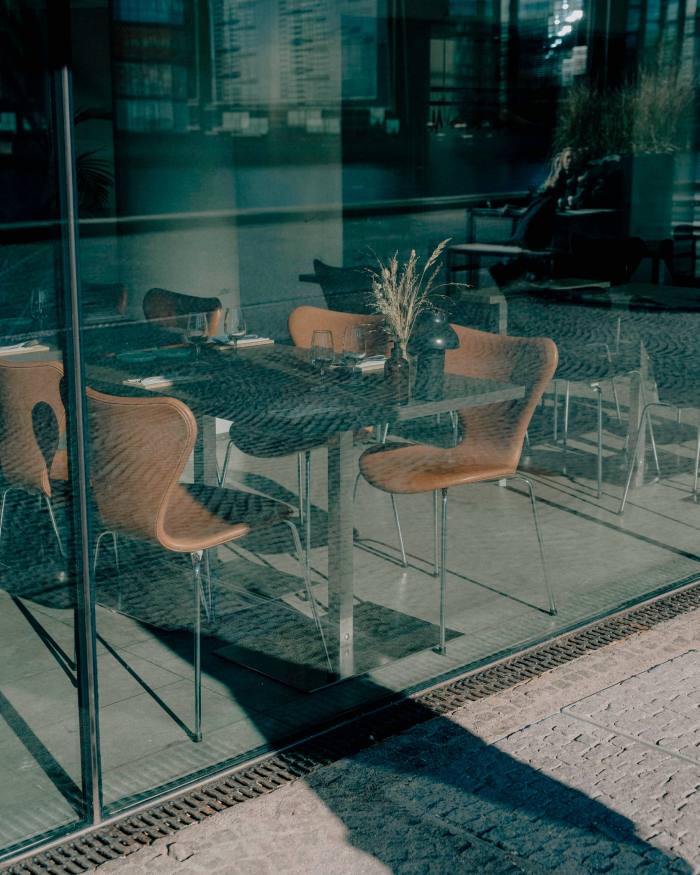
From here it’s a short walk to the harbour, and the so-called “Black Diamond”, the Royal Danish Library. A scene in a series-two episode called “In Brussels, No One Can Hear You Scream” was shot in the restaurant here. (It’s been shut since Covid.) Bordin talks about the shifts in the series that reflect the country’s deepening relationship with Europe. “Early in the series, when Birgitte wants to get rid of someone, she sends them to Brussels. Then you see a shift in mentality — [in series four] 10 years later she’s minister of foreign affairs”. By the end of the series, there are rumours that Birgitte will be appointed EU commissioner. “It reflects the changing Danish relationship with the EU,” Christine says.
Looking across the harbour, Bordin points out a striking row of blocks of flats, which stand in for exterior shots of the Danish national broadcaster, where Katrine Fønsmark (Birgitte Hjort Sørensen) works as a newsreader and interviewer before becoming Birgitte’s head of press. The real studios are some way from the city centre.


As we head over the bridge into the Christianshavn district, we pass the real — and brutalist — Ministry of Foreign Affairs, where Birgitte works in later series, having rejoined government as the leader of her own New Democrats party.
The last stops on the tour take in some of Copenhagen’s loveliest canalside streets. This is Katrine’s neighbourhood. Her flat is above the Eiffel Bar, which has been a bar since 1737, and a few steps away, Café Wilder, is where Kaspar Juul declares his love for her.

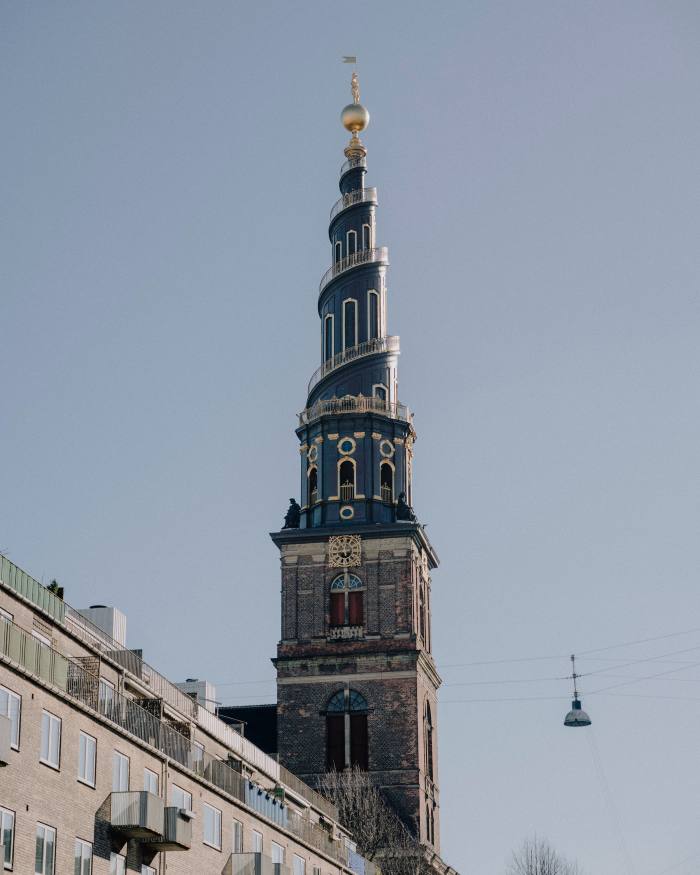

How, I ask Bordin, do Danes feel about the success of Borgen? “It was an immediate hit in Denmark when it first aired, then it became a hit abroad, then it became even bigger in Denmark,” she says.
It’s both specific — Adam Price sometimes took near-verbatim quotes from real Danish politicians about the issues of the day and put them into his characters’ mouths — and universal in its honest depiction of the impact of ambition, power and less-than-moral compromises on the individuals involved. We may have seen the last of Birgitte, but I still hope it’s vi ses (see you soon) and not farvel (farewell).
Nordic Noir Tours runs bespoke “Borgen” and “The Killing” & “The Bridge” tours, from DKr800 (about £95) for one person to DKr250 (about £30) each for four or more.
Do you know any other places in Copenhagen where “Borgen” was filmed? Tell us in the comments
Follow FT Globetrotter on Instagram at @FTGlobetrotter
Cities with the FT

FT Globetrotter, our insider guides to some of the world’s greatest cities, offers expert advice on eating and drinking, exercise, art and culture — and much more
Find us in Copenhagen, London, Hong Kong, Tokyo, New York, Paris, Rome, Frankfurt, Singapore, Miami, Toronto, Madrid and Melbourne
Stay connected with us on social media platform for instant update click here to join our Twitter, & Facebook
We are now on Telegram. Click here to join our channel (@TechiUpdate) and stay updated with the latest Technology headlines.
For all the latest Travel News Click Here
